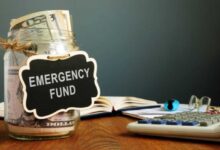Introduction to Geothermal Drilling Rigs
Geothermal drilling rigs are essential tools for harnessing the power of geothermal energy. These rigs are designed to drill deep into the Earth’s crust, accessing the hot rock and steam that can be used to generate electricity. As the world increasingly turns to renewable energy sources, the demand for advanced geothermal drilling rig technology is growing.
The Importance of Geothermal Energy
Geothermal energy offers several advantages over other renewable energy sources:
Reliability: Geothermal drilling equipment is available 24/7, unlike solar or wind power Sustainability: Geothermal resources are virtually inexhaustible Low emissions: Geothermal power plants have minimal greenhouse gas emissions.
The Role of Drilling Rigs in Geothermal Energy Production
Geothermal drilling rigs play a crucial role in the production of geothermal energy. These rigs are responsible for creating the wells that allow access to the Earth’s geothermal resources. Without advanced drilling technology, the geothermal industry would not be able to expand and meet the growing demand for clean energy.
Current State of Geothermal Drilling Rig Technology
Conventional Drilling Rigs
Conventional drilling rigs have been used in the geothermal industry for decades. These rigs rely on rotary drilling technology, which uses a rotating drill bit to crush and cut through rock formations. While effective, conventional drilling rigs have several limitations:
● Limited drilling depth
● High maintenance costs
● Reduced efficiency in hard rock formations
Advanced Drilling Technologies
To overcome the limitations of conventional drilling rigs, the geothermal industry has developed several advanced drilling technologies:
1. Hydraulic Fracturing (Fracking)
Hydraulic fracturing, or fracking, involves injecting high-pressure fluid into rock formations to create fractures and enhance permeability. This technology has been adapted from the oil and gas industry to improve geothermal well productivity.
2. Directional Drilling
Directional drilling allows geothermal wells to be drilled at angles, reaching targets that are not directly beneath the drilling rig. This technology enables the exploitation of geothermal resources in areas where vertical drilling is not feasible.
3. Enhanced Geothermal Systems (EGS)
Enhanced Geothermal Systems (EGS) involve creating artificial geothermal reservoirs in hot, dry rock formations. This technology requires advanced drilling techniques to create extensive fracture networks that can be used to circulate fluid and extract heat.
The Future of Geothermal Drilling Rig Technology
Automation and Robotics
One of the key trends in geothermal drilling rig technology is the increasing use of automation and robotics. Automated drilling systems can operate with greater precision and efficiency than human operators, reducing costs and improving safety.
Examples of automated drilling technologies include:
● Autonomous drill pipe handling
● Robotic pipe racking systems
● Automated mud mixing and pumping systems
Advanced Materials and Coatings
Another area of innovation in geothermal drilling rig technology is the development of advanced materials and coatings. These materials are designed to withstand the extreme temperatures and pressures encountered in geothermal wells, extending the life of drilling components and reducing maintenance costs.
Examples of advanced materials and coatings include:
● Tungsten carbide drill bits
● Diamond-impregnated drill bits
● Thermal barrier coatings
Improved Drilling Fluids
Drilling fluids play a critical role in geothermal drilling operations, serving to cool and lubricate the drill bit, remove drill cuttings, and maintain well stability. Advances in drilling fluid technology are improving the efficiency and effectiveness of geothermal drilling rigs.
Examples of improved drilling fluids include:
● High-temperature water-based muds
● Synthetic-based muds
● Foam-based drilling fluids
Integrated Drilling Systems
Integrated drilling systems represent a significant advancement in geothermal drilling rig technology. These systems combine multiple drilling technologies into a single, streamlined package, improving efficiency and reducing costs.
An integrated drilling system might include:
● Automated pipe handling
● Advanced drilling fluids
● Real-time data monitoring and analysis
Challenges and Opportunities
Despite the many advances in geothermal drilling rig technology, there are still significant challenges to be addressed. These include:
● High upfront costs of advanced drilling technologies
● Limited availability of skilled personnel
● Difficult geologic conditions in some geothermal resources
However, these challenges also present opportunities for innovation and growth in the geothermal industry. As research and development continue, we can expect to see even more advanced geothermal drilling rig technologies emerge in the coming years.
Conclusion
The future of geothermal drilling rig technology is bright, with numerous innovations and advancements on the horizon. From automation and robotics to advanced materials and integrated drilling systems, these technologies are enabling the geothermal industry to access previously untapped resources and expand the production of clean, renewable energy. As the world continues to shift towards sustainable energy sources, the importance of geothermal drilling rig technology will only continue to grow. By investing in research and development, the geothermal industry can overcome the challenges it faces and play a vital role in meeting the global demand for clean energy.
In conclusion, the ongoing advancements in geothermal drilling rig technology not only promise to enhance the efficiency and cost-effectiveness of geothermal energy production but also to significantly reduce its environmental impact. Embracing these innovations will be crucial for the energy sector as it strives to achieve sustainability goals and combat climate change. By fostering collaboration between researchers, industry stakeholders, and policymakers, the geothermal industry can ensure that these cutting-edge technologies are developed and deployed effectively, paving the way for a greener and more resilient energy future.








